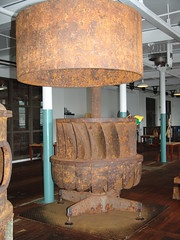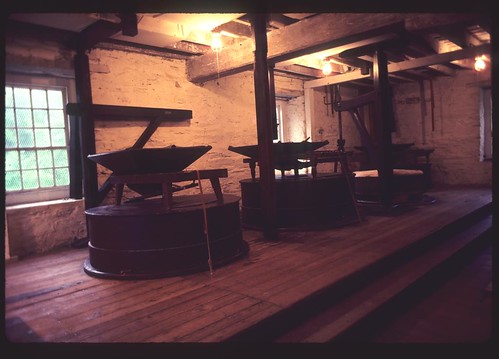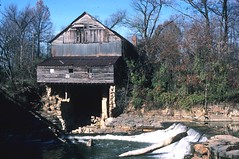Lowell, MA Textile Mills
Lowell, MA
 at three different levels to power the mills. Some of the buildings have been restored for new uses and others remain empty. The falling of the water from one elevation to another provided the source of power for these factories.
at three different levels to power the mills. Some of the buildings have been restored for new uses and others remain empty. The falling of the water from one elevation to another provided the source of power for these factories.  Large turbines powered the mills, which turned due to the falling water through them. Lowell was choosen as an industrial location because of Pawtucket Falls on the Merrimack River. As other forms of powers such as electricity and steam became available cost efficient the factories moved to other parts of the country or outside of the U.S. Parts of Lowell are now a National Park. The main canal has been restored and the NPS offers boat rides along the canal and into the river.
Large turbines powered the mills, which turned due to the falling water through them. Lowell was choosen as an industrial location because of Pawtucket Falls on the Merrimack River. As other forms of powers such as electricity and steam became available cost efficient the factories moved to other parts of the country or outside of the U.S. Parts of Lowell are now a National Park. The main canal has been restored and the NPS offers boat rides along the canal and into the river. Boott mill has been partially restored to provide vistors a view of early textile manufacutring in the U.S.
Boott mill has been partially restored to provide vistors a view of early textile manufacutring in the U.S.  and for other uses.
and for other uses.















